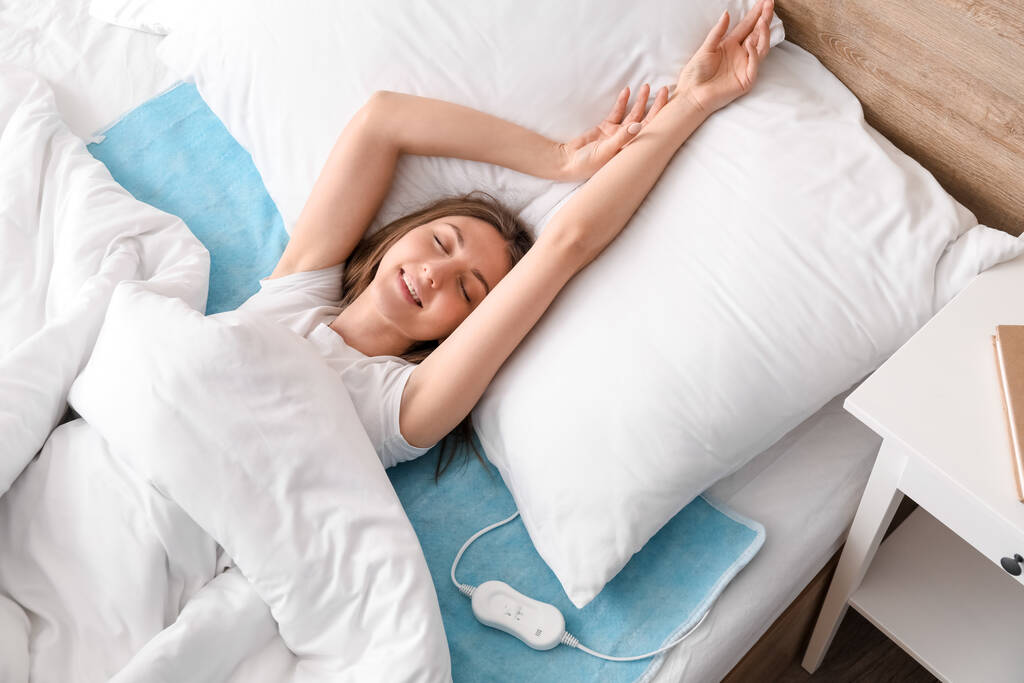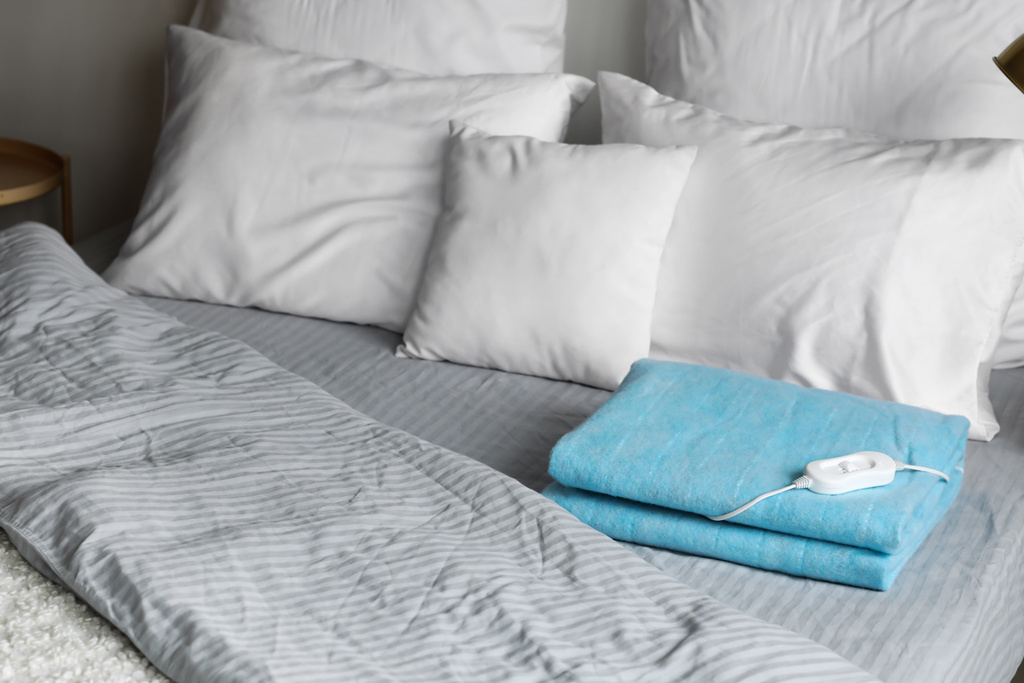Discover the key techniques for ensuring even heat distribution when using a heating pad.
Ensuring Even Heat Distribution When Using a Heating Pad
Using a heating pad can be a cozy and relaxing experience, but it’s important to ensure that the heat is evenly distributed for maximum comfort and safety. In this article, we’ll dive into the importance of even heat distribution, the different types of heating pads available, techniques to achieve proper heat distribution, common issues you may encounter, and maintenance tips to keep your heating pad in top shape. So grab your favorite blanket and let’s get started!

Understanding the Importance of Even Heat Distribution
When it comes to using a heating pad, even heat distribution is key. Why? Well, think about it – if one area of the pad is significantly hotter than the rest, you could end up with burns or discomfort. Plus, uneven heat distribution can also affect the effectiveness of the heat therapy. Nobody wants a patchy therapy session!
But let’s dive deeper into the science behind heat distribution and explore the health and safety implications of uneven heat.
The Science Behind Heat Distribution
Heat naturally moves from hot areas to colder ones, seeking equilibrium. This is called thermal conduction. When you turn on your heating pad, it begins to generate heat, and that heat needs to be evenly distributed across the pad’s surface to ensure a consistent and comfortable experience.
Heating pads are designed with layers of materials, such as foam, that help distribute the heat evenly. These materials have good thermal conductivity, meaning they allow heat to flow through them easily. As a result, when you lie down on that cozy heating pad, you’re enveloped in warmth – evenly distributed warmth!
By ensuring even heat distribution, the heating pad can effectively target the intended area and provide the desired therapeutic benefits. Whether you’re using a heating pad to soothe muscle pain or to relax after a long day, the even heat distribution plays a crucial role in maximizing the benefits of heat therapy.
Health and Safety Implications of Uneven Heat
Uneven heat distribution may seem like a minor inconvenience, but it can actually have a bigger impact on your health and safety. When certain areas of the heating pad become hotter than others, it can lead to discomfort, burns, or even skin damage.
For individuals with sensitive skin or underlying skin conditions, uneven heat can be particularly problematic. It can cause irritation, redness, or exacerbate existing skin conditions such as eczema or dermatitis. By prioritizing even heat distribution, you can minimize the risk of skin irritation and ensure a safe and comfortable experience with your heating pad.
Moreover, uneven heat distribution can also affect the overall effectiveness of the heat therapy. If certain areas of the pad are not reaching the desired temperature, the therapeutic benefits may be compromised. Consistent and even heat distribution allows for a more effective and targeted heat therapy session, ensuring you receive the maximum benefits for your specific needs.
So, the next time you use a heating pad, remember the importance of even heat distribution. By understanding the science behind it and recognizing the potential health and safety implications of uneven heat, you can make informed decisions to prioritize your well-being and optimize your heat therapy experience.
Types of Heating Pads and Their Heat Distribution
Now that we understand the importance of even heat distribution, let’s explore the different types of heating pads and how they distribute heat.
Electric Heating Pads
Electric heating pads are the most common type available. They are designed with heating elements that evenly distribute heat across the pad’s surface. These heating elements are strategically placed to ensure that the warmth is spread uniformly, providing consistent and soothing relief to your body.
One of the advantages of electric heating pads is their adjustable heat settings. This allows you to find your ideal level of comfort, whether you prefer a gentle warmth or a higher intensity heat. However, it’s important to follow the manufacturer’s instructions and use a cover to protect your skin from direct contact with the heating elements.
Moreover, electric heating pads often come with safety features such as automatic shut-off timers. These timers ensure that the pad doesn’t overheat or remain on for extended periods, reducing the risk of burns or accidents.
Microwaveable Heating Pads
Microwaveable heating pads are a convenient option for those who prefer a portable and hassle-free solution. These pads are usually filled with materials that can retain heat, such as rice or grains. When heated in the microwave, they release a comforting warmth that can alleviate muscle tension and provide relaxation.
While microwaveable heating pads offer convenience, it’s important to ensure that they are properly heated and evenly distributed before use. Uneven distribution of heat can lead to hot spots, which may cause discomfort or even burns. To ensure even heating, it is recommended to gently shake or knead the pad after heating to distribute the warmth evenly throughout.
It’s worth noting that microwaveable heating pads may not retain heat for as long as electric heating pads. However, they can still provide temporary relief and are particularly useful for quick, on-the-go applications.
Chemical Heating Pads
Chemical heating pads offer a different approach to providing warmth. These pads are activated by a chemical reaction that produces heat. They are often used for temporary relief and are usually disposable.
Chemical heating pads are designed to provide quick warmth, making them suitable for immediate pain relief. However, it’s important to note that the heat may not be as evenly distributed compared to other types of heating pads. The chemical reaction may generate more heat in certain areas, resulting in localized warmth rather than uniform coverage.
These pads are commonly used in situations where electricity or microwave access is limited, such as during outdoor activities or when traveling. They are compact, lightweight, and can be easily stored in a bag or pocket for on-the-go use.
It’s important to follow the instructions provided by the manufacturer when using chemical heating pads. This ensures that you activate the pad correctly and use it safely for optimal results.
Techniques for Achieving Even Heat Distribution
Now that you know about the different types of heating pads, let’s explore some techniques to ensure even heat distribution for a blissful experience!
Proper Placement of the Heating Pad
The placement of your heating pad plays a big role in achieving even heat distribution. It’s important to position the pad directly on the area that needs heat therapy. This ensures that the heat is concentrated where you need it most, providing targeted relief.
When placing the heating pad, consider the size and shape of the pad in relation to the area you want to treat. For larger areas, such as the back or abdomen, choose a heating pad that covers a wider surface area. This will help distribute the heat more evenly across the entire region.
In addition to the size, the thickness of the heating pad can also affect heat distribution. Thicker pads may take longer to warm up, but they can provide a more gradual and consistent heat. Thinner pads, on the other hand, may heat up quickly but may not distribute the heat as evenly.
The Role of Movement in Heat Distribution
Movement can also help promote even heat distribution. Slowly adjusting your position or gently shifting the heating pad’s placement can help spread the warmth across a larger area. Plus, it can feel like a mini-massage as you move!
Consider incorporating gentle stretches or exercises while using the heating pad. This not only helps with heat distribution but also promotes blood circulation, which can enhance the therapeutic benefits of the heat therapy.
Another technique to enhance heat distribution is to use a heating pad with flexible materials. These pads can easily conform to the contours of your body, ensuring that the heat reaches every nook and cranny for maximum effectiveness.
Adjusting Heat Settings for Optimal Distribution
Most heating pads come with adjustable heat settings. Experiment with different settings to find the one that works best for you. Keep in mind that higher heat settings may not always mean better distribution. Sometimes, a lower setting can provide more gentle and consistent warmth.
When using a heating pad with adjustable heat settings, start with the lowest setting and gradually increase it until you reach your desired level of warmth. This allows your body to acclimate to the heat and ensures a comfortable experience.
It’s important to note that heat distribution can also be influenced by external factors, such as the surrounding temperature and humidity. If you’re using a heating pad in a cold room, for example, it may take longer for the heat to distribute evenly. Consider adjusting the room temperature or using additional blankets to create a cozy environment that aids in heat distribution.
By following these techniques for achieving even heat distribution, you can maximize the benefits of your heating pad and enjoy a soothing and therapeutic experience. Remember to always read the manufacturer’s instructions and consult with a healthcare professional if you have any concerns or specific medical conditions.
Troubleshooting Common Heat Distribution Issues
While most heating pads work like a dream, you may encounter some common issues along the way. Let’s take a look at how to troubleshoot them!
Overheating and How to Prevent It
If you find that your heating pad is getting too hot, it’s important to take action to prevent overheating. Check the manufacturer’s guidelines to ensure you are using the correct settings and duration. If the problem continues, it might be time to replace your heating pad.
Cold Spots and How to Eliminate Them
Cold spots can be a real buzzkill during a relaxing heat therapy session. If you notice areas of your heating pad that are not getting warm enough, try adjusting its position or gently massaging the pad to help distribute the heat. If the problem persists, it may be time for a new heating pad.
Maintenance Tips for Consistent Heat Distribution
Now that you’re heating pad savvy, let’s talk about how to keep it in tip-top shape for optimal heat distribution.

Regular Cleaning and Care
Cleaning your heating pad regularly helps maintain its performance and even heat distribution. Check the manufacturer’s instructions for specific cleaning guidelines. Some heating pads may have removable covers that can be washed, while others may require spot-cleaning. Keep your heating pad clean, and it will keep you cozy!
When to Replace Your Heating Pad
Just like any other appliance, heating pads have a lifespan. If you’ve tried troubleshooting and can’t achieve consistent heat distribution, it may be time to invest in a new one. Remember, safety and comfort should always come first!
So there you have it – a guide to ensuring even heat distribution when using a heating pad. With the right techniques and a little maintenance, you can enjoy a blissful heat therapy experience that keeps you cozy and helps soothe your aches and pains. Stay warm and embrace the power of even heat distribution!



